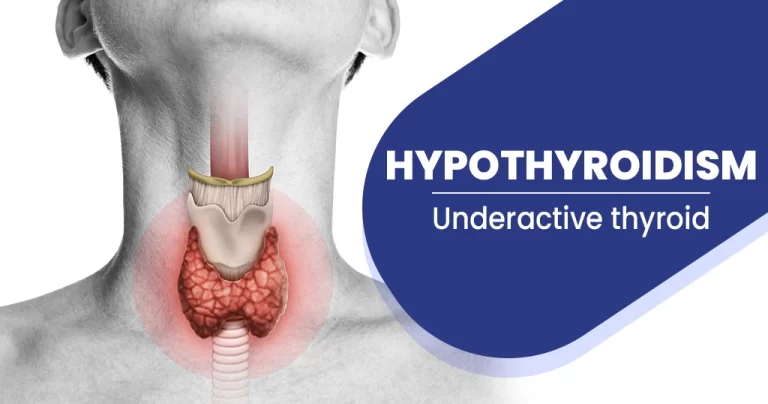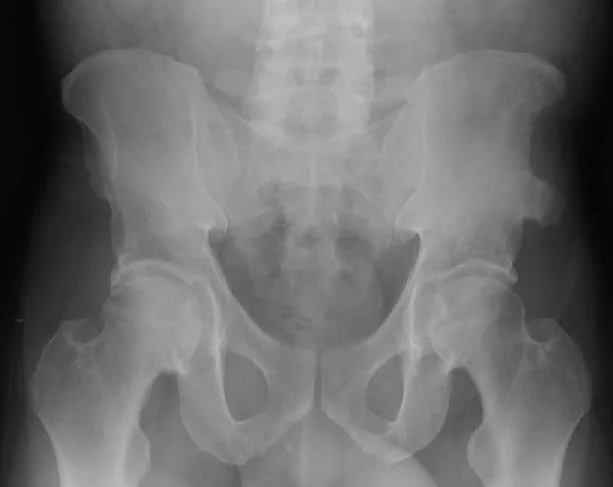Mastoiditis
Introduction
Mastoiditis is an inflammation of the mastoid air cells located in the temporal bone. The bone septations that make up the mastoid air cells are continuous with the middle ear cavity and are lined with epithelium. Children are more likely than adults to get middle ear infections, increasing their chance of acute mastoiditis. Acute otitis media is most frequently followed by acute mastoiditis.
Mastoiditis must also be caused by acute middle ear infections and incipient mastoiditis, both of which are uncommon causes. A subacute middle ear infection is known as subacute mastoiditis. Incipient mastoiditis is an infection of the mastoid air cells alone.
Antibiotics have made mastoiditis less probable for acute mastoiditis to develop and proceed to serious complications. Mastoiditis, however, may cause life-threatening complications, such as meningitis, a cerebral abscess, and venous sinus thrombosis, if it is not treated. Despite modern imaging methods, medicines, and microsurgical procedures, ten percent of children die from mastoiditis sequela.
Types of mastoiditis
Based on the mode of infection, mastoiditis can be divided into three groups, which are described below:
- incipient mastoiditis: Mastoid air cell infection that has not spread to the middle ear cavity is known as incipient mastoiditis.
- acute coalescent mastoiditis: It is the most frequent presentation of wasting via the bony septations of the mastoid air cells and inflammation of the epithelial lining. Intracavity abscess formation due to erosion may develop and spread to nearby structures.
- Subacute Mastoiditis: recurrences in stages of acute otitis media or an ongoing middle ear infection combined with insufficient antimicrobial treatment results in the degeneration of the bony septa between the mastoid air cells.
Cause of mastoiditis
Mastoiditis may happen to anyone at any age, however, the majority of cases affect people under the age of two, with an average age of 12 months. Prior to the development of antibiotics, acute mastoiditis impacted 20% of instances of acute otitis media, and it was commonly linked to serious cerebral consequences.
Antibiotics, mastoidectomy, and PCV-7 have all become widely available, significantly decreasing the number of cases. In particular, coalescent mastoiditis, with a death incidence of 2 per 1 lakh population, showed up in 5 to 10% of children with acute otitis media prior to the development of antibiotics. With a mortality incidence of less than 0.01 per 1 lakh people, 0.002% of children with acute otitis media advance to acute coalescent mastoiditis after receiving antibiotics and the pneumococcal vaccine PCV-7.
The mechanism of mastoiditis
The majority of mastoiditis cases develop as acute otitis media progresses. The outer ear, middle ear, and inner ear are the three cavities that make up the ear. Particularly, the middle ear cavity contains significant organs including the Malleus, Incus, Stapes, and Eustachian tube, and stretches from the tympanic membrane to the cochlea. The lining of the mastoid air cells, which make up a component of the temporal bone, is linked with the middle ear cavity.
The mouth cavity and the middle ear are connected via the Eustachian tube. It is in charge of removing air or fluid from the middle ear. Infectious agents may develop in an aggressive atmosphere when this tube narrows due to inflammation or debris. As previously developed, the lining of the mastoid air cells is linked with the covering of the middle ear cavity. When an infection spreads from the middle ear to the mastoid air cells, it should cause the bone septum to erode and small air cells to merge into bigger, pus-filled ones, a condition known as acute coalescent mastoiditis. The sequela of this reducing cavity’s pus include subperiosteal abscess, sigmoid sinus thrombosis, meningitis, and cerebral abscess. It should also spread through direct extension, thrombophlebitis, and bone routes.
Streptococcal pneumonia is the most frequent infection associated with mastoiditis. Group A beta-hemolytic streptococci, Staphylococcus aureus, Streptococcus pyogenes, and Haemophilus influenzae are further frequent infections. Age under two years old, immunocompromised status, recurrent acute otitis media, or incomplete pneumatization of the mastoid process should be risk factors for mastoiditis.
Signs and symptoms of mastoiditis
The patient is typically a young kid under the age of two who exhibits nervousness, fussiness, fatigue, fever, ear pulling, ear pain, swelling of the ear lobe, redness and tenderness behind the ear, leaking from the ear, and drooping and bulging of the ear. Adult patients frequently express extreme ear pain, fever, and headache complaints. Physical examination will show postauricular erythema, soreness, warmth, and fluctuance with protrusion of the auricle in both children and adults.
The posterosuperior wall of the external auditory canal must be enlarged during the otoscopic examination, along with the tympanic membrane, which will also be enlarged and filled with pus. The tympanic membrane should crack often and start leaking pus. The following are a few essential variables. Usually, but not always, a healthy tympanic membrane contains acute mastoiditis
Additionally, even if an earlier or simultaneous otitis media history is frequent, it is not always necessary to rule out acute mastoiditis because some cases can develop suddenly at the onset of acute otitis media.
Clinically, mastoiditis is diagnosed. When the person is unclear of the medical condition or taking an additional aspect of acute mastoiditis into assessment, laboratory, and imaging tests are utilized as a preservative A CBC with differential, an ESR, and a CRP are examples of laboratory tests that can be performed. The two inflammatory markers ESR and CRP will most frequently be raised, as well as a left-shifting increased white blood cell count. CT imaging is used in the radiologic assessment of acute mastoiditis. The rupture of the bone septation in the mastoid air cells and the possible spread of the infection should both be seen on a CT scan. The following is specifically detected by CT imaging in patients with mastoiditis:
- Middle ear fluid and/or mucosal thickening, as well as mastoid effusion.
- loss of the bony septae’s ability to clearly identify the mastoid air cells
- reduction of the mastoid cortex’s irregularity
- A thickening of the periosteum, periosteal disturbance, or subperiosteal abscess.
Treatment of mastoiditis
Despite being the primary form of mastoiditis treatment, antibiotics have been demonstrated to have an 8.5% complication risk when used alone. Depending on the severity of the infection, further procedures involving mastoidectomy, tympanostomy tube implantation, and myringotomy might be necessary. Acute mastoiditis patients should typically hospitalized after being diagnosed.
Tympanostomy: The ear tubes are tiny, hollow cylinders that medical professionals insert into the eardrums of patients. Both acute mastoiditis and recurrent middle ear infections must be treated by tympanostomy operation.
Mastoidectomy: Medical professionals cut off the contaminated portion of the mastoid bone from the person or person’s child.
Uncomplicated acute mastoiditis is classified as a condition for which individuals with no major past medical history and few physical examination findings have successfully undergone outpatient IV ceftriaxone therapy with low complication rates. If the patient produces sizable post-auricular lesions, imaging investigations indicate bone erosion, high fevers, or neurological symptoms, the patient’s case becomes difficult. Simple inpatient cases should be treated well with IV antibiotics, high-dose IV steroids, and myringotomy with tympanostomy tube installation.
Serial physical exams must be essential since a patient’s clinical condition might rapidly decline. A mastoidectomy should advised if mastoiditis does not get better in 48 hours. To treat the most prevalent infections, mainly Streptococcus pneumoniae, IV vancomycin alone is the preferred IV antibiotic for patients without chronic otitis media. Group A beta-hemolytic streptococci, Staphylococcus aureus, Streptococcus pyogenes, and Haemophilus influenza are among the more frequent pathogens.
Vaccination is the most significant technique of mastoiditis prophylaxis. Patients who are not immunized will be more likely to contract pneumococcus, which frequently results in otitis media and consequently causes mastoiditis. Furthermore, mastoiditis should be avoided by treating acute otitis media as soon as possible. Under-age people, immunocompromised status, repeated acute otitis media, or insufficient pneumatization of the mastoid process are additional risk factors for mastoiditis that can’t be changed.
Differential Diagnosis
A broad history and physical examination must be important since common approximates may be missed, leading to an incorrect diagnosis and an extended delay in treatment. The conditions of cellulitis, otitis externa, lymphadenopathy, trauma, and tumor frequently resemble acute mastoiditis. For instance, there have been numerous case reports of cancer or tumors including rhabdomyosarcoma, Ewing sarcoma, and myofibroblastic tumors being mistaken for mastoiditis. Bilateral tumors were more prevalent, cranial nerve involvement was more common, and fever was less common. These distinctions are significant because children are a prevalent age group for both mastoiditis and tumors.
Vancomycin must be utilized with an anti-pseudomonal medication in patients with a history of recurrent ear infections. In a multicenter study, Staphylococcus aureus was associated with the greatest risk of problems while in the hospital, and Streptococcus pyogenes was associated with the highest rate of complications at presentation, with approximately 50% of cases.
Complications
Unexpected effects may arise as uncomplicated acute mastoiditis progresses. Opportunistic infections can move inside toward the brain or outward toward the periphery depending on where the mastoid process is located. The following are some extracranial effects caused by acute mastoiditis:
An abscess along the edge of the skull close to the mastoid process is referred to as a subperiosteal abscess.
facial nerve compression causing facial nerve palsy.
Tinnitus results from the spread of infection within the middle ear cavity, which causes labyrinthitis (nausea, vomiting, and vertigo).
Other parts of the skull’s osteomyelitis are referred to as petrous apicitis. The Gradenigo syndrome is a collection of symptoms that frequently includes otorrhea, retro-orbital discomfort, ipsilateral abducens palsy, and other cranial nerve abnormalities.
An abscess in the sternocleidomastoid muscle’s sheath is known as a bezold abscess.
In 6 to 23% of cases, acute mastoiditis has intracranial symptoms. Physical exam results indicating intracranial involvement, such as seizures, nuchal rigidity, headaches, and altered mental status, are frequently seen in these patients. They consist of:
- cerebellar or temporal lobe abscess
- Abscess either epidural or subdural
- It is the most frequent of all intracranial problems, venous sinus thrombosis.
Discussion
Patients in both pediatric and adult emergency, family, and ENT settings frequently present with ear discomfort complaints. The majority of these individuals will be treated with antibiotics for otitis media or otitis externa. At this moment, the emergency management or FM practitioner’s range of activity ends.
The patient should go to an emergency room with an ENT covering if the patient shows clinical symptoms of acute mastoiditis since the patient will probably be hospitalized to the hospital for IV antibiotics, myringotomy, installation of a tympanostomy tube, and perhaps mastoidectomy.
Any emergency management or facility management practitioner may refer a patient to an ENT provider on an outpatient basis for consultation regarding the danger and inhibition of mastoiditis if the patient frequently presents with acute otitis media or chronic otitis media but is otherwise healthy and there is no concern for mastoiditis.
Prevention of mastoiditis
Should an individual produce mastoiditis within an ear infection?
Yes, occasionally cholesteatoma, a condition, may contribute to mastoiditis. A cholesteatoma is an abnormal skin growth in the temporal bone and middle ear, which is located under the eardrum. Air or liquid may be utilized to fill cholesteatomas.
Should mastoiditis be preventable?
Even though mastoiditis cannot be prevented, there are steps the person might take for the safety of the kid and himself/herself:
A number of infections, including middle ear infections that might result in mastoiditis, are brought on by the pneumococcus bacteria. The pneumococcal vaccines for kids under 2 years old must be advisable.
Discuss any precautions the person should take to lessen the possibility that the person or person’s kid might get mastoiditis with a healthcare professional if you or your child do experience ear problems.
Prevent middle ear infections by taking precautions.
How should someone avoid getting a middle ear infection?
someone should do a lot of things to prevent middle ear infections that might cause mastoiditis, like:
should not overuse pacifiers. Parents’ preferred method of relaxing restless infants and irritable babies may be binkies (pacifiers). However, prolonged pacifier usage raises the risk of middle ear infections.
Avoid smoking. someone who uses smoke accelerates the risk of ear infections. Make sure nobody smokes inside the house, in the car, at the daycare center, or anywhere else where children must be present.
Managing allergies. his/her or their child’s eustachian tube could get blocked due to inflammation and mucus brought on by allergic responses, increasing the likelihood of ear infections.
fight against colds. Try to restrict the exposure of the child to the cold since it usually leads to ear infections.
What should the individual expect if she/he has or her child has mastoiditis?
Usually, a few days after he/she or the kid begins taking antibiotics, the symptoms of mastoiditis diminish. To prevent the infection from returning, it is vital that the person or their child finish all of the antibiotics as directed.
When typical middle ear infections remain unchecked and extend to the mastoid, the person develops mastoiditis. The big bone behind the ear is that. Mastoiditis used to be a common, severe condition that could be harmful to very young children. The middle ear infection that causes mastoiditis can now be prevented with vaccines. Antibiotics are available to treat those illnesses. Contact a medical professional when the person believes he/she or the kid has a middle ear infection so the person and the child should achieve the treatment and lower the possibility of producing mastoiditis
The outlook
The majority of individuals with simple acute mastoiditis should be able to resolve their symptoms without a mastoidectomy by using conservative treatments such as antibiotics, steroids, and myringotomy. However, there is an absence of evidence on non-invasive versus invasive treatment for acute mastoiditis. Patients who are undergoing treatment for acute mastoiditis must also be closely watched, especially in the first 48 hours. Mastoidectomy is therefore advised when the patient’s clinical condition doesn’t improve or worsens after admission.
FAQs
Should mastoiditis impact hearing?
If mastoiditis fails to be treated promptly, it might result in significant issues like meningitis or irreversible hearing loss.
which nerve should exactly impacted by mastoiditis?
By crossing the frequently absent wall of the prominence of the facial nerve canal, mastoiditis and tympanic cavity inflammation might negatively influence the facial nerve.
should other bodily parts contract mastoiditis?
The mastoid bone is one of the nearby structures that may be affected by this. A bacterial infection can proceed to develop all over the skull’s bones and might reach the brain via the blood without prompt antibiotic therapy.
Can paralysis result from mastoiditis?
Facial nerve paralysis, hypoglossal nerve paralysis, and abscess in the nasopharynx are caused by chronic mastoiditis
What types of germs produce mastoiditis?
Streptococcus pneumoniae is the most frequent etiologic agent causing surgical mastoiditis, followed by Haemophilus influenzae and group A Streptococcus pyogenes (GAS) because acute otitis media (AOM) is the antecedent disease.
Mastoiditis is genetic?
Genetic susceptibility to persistent otitis media and, consequently, mastoiditis, as well as statistically significant evidence that it is highly heritable, are both present. Heritability in twins and triplets has shown that 45-75% of the danger factors for recurrent otitis media are familial.
How urgent is mastoiditis?
However, if mastoiditis is not properly treated, it can result in significant side effects like hearing loss, meningitis, or even death. Consult a physician straight away if believe to have mastoiditis. To avoid long-term consequences, it is essential to have early diagnosis and treatment.
How the fluid is able to enter the mastoid?
Fluid will reach the mastoid air cells during bouts of otitis media with effusion because they are continuous with the middle ear through the aditus to the mastoid antrum. In fact, fluid will fill the mastoid air cells in practically all episodes of otitis, whether sterile or infected.
Which bodily organs are impacted by mastoiditis?
Typically, mastoiditis develops after an untreated middle ear infection. The mastoid cells of the mastoid bone are susceptible to infected by bacteria that travel from the middle ear to the inner ear.
should mastoiditis lead to hunger loss?
Latent mastoiditis was characterized by the absence of appetite, a persistent or recurrent fever, and failure for growth.
should problems with balance come from mastoiditis?
Additionally, if mastoiditis is not treated properly, it should result in serious health issues like vertigo, facial paralysis, and even severe hearing loss.
Should mastoiditis be visible?
The spongy bone starts to deteriorate when it gets infected or inflammatory, producing obvious swelling. The infection typically results from a lingering middle ear infection and, if left untreated, can develop outside of the mastoid bone and lead to a number of consequences.
What is the mastoiditis oral treatment?
Instead, those who are not critically unwell may be given a fluoroquinolone antibiotic (such as ciprofloxacin) orally. Doctors utilize the outcomes of the laboratory culture to select the appropriate antibiotic to take after this initial treatment.
should mastoiditis be cured by homeopathy?
Mastoiditis can be treated naturally by boosting the body’s natural defenses against an infectious pathogen that causes it. These aid in reducing mastoid bone inflammation and stop it from spreading further, which could result in the bone’s eventual death.
References
Acute mastoiditis: 20 years of experience with uniform management(https://pubmed.ncbi.nlm.nih.gov/31369930) Date accessed August 31, 2023
Merck Manual. Mastoiditis. (https://www.merckmanuals.com/home/ear,-nose,-and-throat-disorders/middle-ear-disorders/mastoiditis) Accessed 11/21/2022.
National Health Service. Mastoiditis. (https://www.nhs.uk/conditions/mastoiditis/) Accessed 11/21/2022.
Mastoiditis (Acute & Chronic): Symptoms, Causes, Treatment.(https://www.webmd.com/cold-and-flu/ear-infection/mastoiditis-symptoms-causes-treatments).accessed June 29 ,2021
acute mastoiditis.(https://www.ncbi.nlm.nih.gov/medgen/675239).accesssed 08/08/2023






